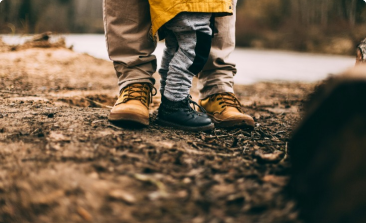Description
Here’s everything new parents need to know about changing baby diapers, including how to make the process as easy as possible.
You’ll probably decide before you bring your baby home whether you’re going to use cloth or disposable diapers. Whatever you use, your child will soil their diapers about 10 times a day, or about 70 times a week.
Changing essentials that you should always have on hand, Before you begin, make sure you have the following diaper supplies nearby:
- Clean diapers. It’s always good to have a few spares on hand when changing diapers.
- Clean cotton balls, washcloths or towels. For new-borns under 1 month old and those with nappy rash, use warm water and a cotton ball to wash the baby off and a washcloth to dry (you can also try using hypoallergenic wipes for new-born’s with no nappy rash if you prefer). For older infants, use pre-moistened wipes; Look for ones that are hypoallergenic and fragrance and alcohol free.
- Change of clothes for the baby. You may need one if the diaper leaks (it happens!).
- Clean swaddles or waterproof pants. If you use cloth diapers, make sure you have them on hand.
- Ointment for the prevention and/or relief of diaper rash. When baby has diaper rash, it forms a barrier between that tender bottom and irritating faeces and urine. No need for lotions, baby oil or powder. However, remember that many creams and ointments for diaper rash cannot be used with cloth diapers.
- A loving touch. Your gentle voice (speaking or singing) and touch can make changing diapers easier for your baby—and for you, too.
- A distraction. Keep a favourite toy visible and even a music box or mechanical toy for distraction, especially if you have a fidgety baby.
After each bowel movement or when the diaper is wet, lay your baby on their back and remove the soiled diaper. Use the water, cotton balls and washcloth or wipes to gently clean your baby’s genital area. When removing a boy’s diaper, do so gently, as exposure to the air can cause him to urinate. When wiping a girl, wipe her buttocks front to back to avoid urinary tract infection (UTI). To prevent or heal a rash, apply an ointment. Always remember to wash your hands thoroughly after changing diapers.
Diaper rash is a common problem.
Typically, the rash is red and bumpy and will go away in a few days with warm baths, some diaper cream, and some time without a diaper. Most rashes occur because the baby’s skin is sensitive and gets irritated by the wet or pooping diaper.
Try these tips to prevent or cure diaper rash:
- Change your baby’s diaper often and as soon as possible after a bowel movement.
- Gently clean the area with mild soap and water (cloths can sometimes be irritating), then apply a very thick layer of diaper rash or barrier cream. Creams containing zinc oxide are preferred as they provide a barrier against moisture.
- If you use cloth diapers, wash them in color and fragrance free detergents.
- Leave the baby without diapers for part of the day. This allows the skin to air out.
- If diaper rash lasts more than 3 days or seems to be getting worse, call your doctor – it may be caused by a prescription yeast infection.
You might also like
Parenting Updates: Subscribe Now!

ALL UPDATES
Go from pregnancy to adolescents with our email bulletins, loaded with reasonable, modern data about bringing up youngsters and taking care of yourself as a parent.
SUBSCRIBE NOW
MOVIE REVIEWS
Find the best motion pictures for your family with our youngster amicable surveys. Search new deliveries and more seasoned motion pictures by age, rating and type.
SUBSCRIBE NOW
MENTAL HEALTH RESOURCES
Is it safe to say that you are an expert working with families? Get data about kid, adolescent and parent psychological well-being and prosperity.
SUBSCRIBE NOW











































